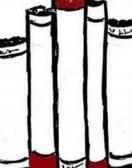He just appeared one morning and set up shop in the market square. It was drizzling. Everything was either a shade of brown or a shade of gray. He was the lightest thing there, the one they called the black doctor. He wore a pale suit, a straw hat and waved his arms like a conductor. The men spat about dark crafts and foreign notions, but the women loved him. Oh, the rubs, potions, tinctures and lotions he had. Unguents even.
As a break from my regular Landing Book Shelves task, I have been reading The Herbalist, the first novel from Niamh Boyce who was winner of the Hennessy XO New Irish Writer of the Year in 2012. The book was kindly offered by Penguin Ireland and has not tarried for too long on the TBR Pile due to The Herbalist’s very tempting prologue, from which I quoted above.

‘An elegant morality tale’ (Sunday Times)
Niamh Boyce based her title character on a real person called Don Rodrique de Vere who was practicing as a herbalist in Athy in 1942. I won’t say any more for fear of giving away the germ of the novel’s plot, but if you do want to know more about the inspiration behind the character, click on Athy Eye on the Past blog or read Niamh Boyce’s interview with Sinead Gleeson in the Irish Times. The Herbalist is set in a small midlands town in the late 1930s and is told through the voices of four women of differing ages and social positions. Emily, Carmel, Sarah and Aggie are all well drawn, strong characters. Boyce adds to her strong cast with several minor characters such as Mai and Birdie; also with the beautiful Rose whose quieter voice interweaves throughout the narrative.
This was an era when people’s lives (and arguably women’s in particular) were structured and controlled to a great degree and it wasn’t done to stick out too far against the perceived norm. Into this repressed social mix comes a half –Indian herbalist who promises much to the enthralled women of the town. Most of the towns women seem to have dealings with the herbalist; an exotic stranger who upsets the balance of the town where everyone knows everyone else’s business (or thinks they do).
Impressionable teenager Emily develops an infatuation with the healer (known as The Don) and becomes the talk of the town as a result. He indulges her fantasy for his own reasons, promising Emily a new life far away from the town where her family is regarded as less than respectable and nobody thinks she will amount to much good. Emily’s voice comes clearly down the years and you can well imagine a lively Hollywood obsessed girl itching for more than her life seems to promise. The reader sees before she does, that Emily’s route out will be her exquisite skill with a needle and thread. But before that, she will have to stand up and attempt to put right an injustice with all of her reserves of courage. I’ll say no more lest I plot-spoil.
The novel has plenty of fascinating insights into life for people (and in particular the women) in small town Ireland of seventy years ago. Banned books, the need to be respectable, the pressure on married couples to conceive, shameful secrets lurking behind closed doors and young women disappearing into Magdalene Laundries (often as a result of rape) are all themes in the novel. The book carries all this lightly however and there isn’t a feeling of being overburdened as Boyce tucks her threads so neatly together. There are obviously plenty of darker shades in the story, but these are well handled and leavened with gritty humor.
I was intrigued to discover that the banning of books in fact led to a thriving black market in racy books such as Lady Chatterley’s Lover, Bird Alone and Tender is the Night. In the novel, both Birdie and Carmel have an under the counter trade in illegal books to bring in a few extra shillings. There is a funny scene where Carmel’s husband Dan discovers the stash and claims to be so shocked, yet he can’t put the book down and he avidly reads the awful material, ‘ He slammed it shut, glared at his wife. Opened it again…read a section, snapped it shut. Glared. Opened it…on he went, over and over again, with the same exaggerated expression of wide-eyed horror’.
The herbalist may have used his potions to charm the women of the town, but Sarah’s aunt Mai is also a skilled herbalist, using her ancient talents in her role as a midwife in her village. Mai’s kitchen in the throes of violet tincture production was beautifully described. Again with a touch of humour, as Mai and Sarah hide the poitín used in the process from the local school master’s sharp eyes. Boyce reminds us both how important a woman like Mai would have been in her community and how little money there was at the time to pay for the services of a midwife. Mai more often than not had to accept payment in kind, because as she pointed out to Sarah ‘you couldn’t shove a baby back in’.
I thoroughly enjoyed The Herbalist and look forward to reading more from Niamh Boyce in the future. In the meantime, I have one more Landing Eight title to report back on and then a new Landing Reading Challenge awaits me! All will be revealed shortly…
Back soon and don’t forget to drop a comment in the box if you’ve read anything good lately.

